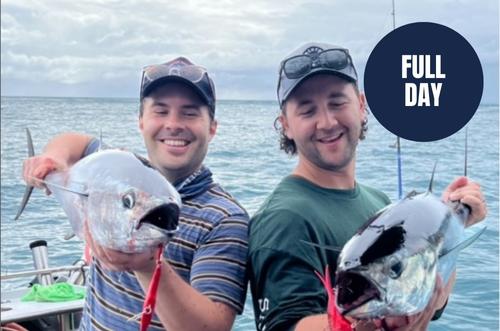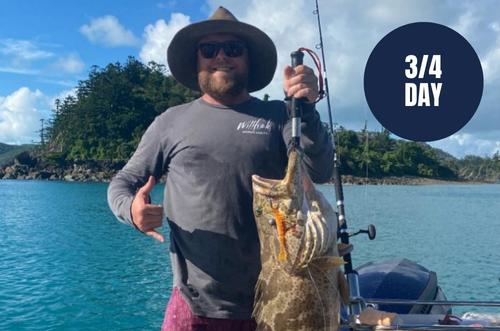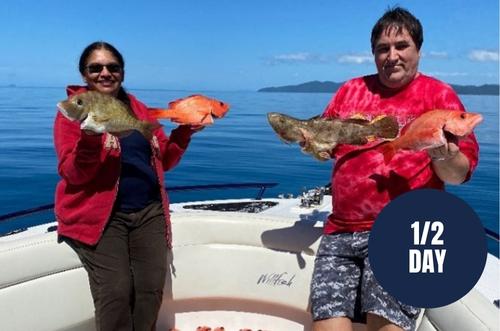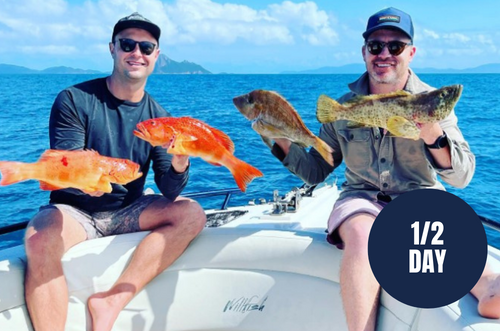Snapper Fishing Whitsundays
Ask any angler which fish he’s most eager to catch and he’ll probably say the crimson-flanked and hump-headed Snapper. Today, we’ll be sharing our Snapper Fishing Whitsunday tips to finally take home that coveted prize. Snapper is one of the most popular angling targets here in Australia. Besides its appearance, its dogged persistence when hooked and great eating qualities make it the perfect target. Looking to make your angling experience more memorable? Then continue reading this post on Snapper Fishing Whitsundays as we give you tips on how to up your game!
Snapper Fishing Whitsundays: Where Snappers Live
The word “big” is relative when it comes to snappers. For example, a New South Welshman may see a 5-kg red the catch of a lifetime. But, a South Australian fisherman anchored in the upper Spencer Gulf can see this as a disappointment. So if you’re looking for large reds, you’ll want to search the southern coasts. Most are found in Southern Australia and, to a lesser degree, in southern Western Australia and Victoria. Also, snappers are normally ravenous feeders—never leaving a stone unturned just to keep their stomachs full. Let’s say they see a sizeable school of fish but those fish are busy with their job. As a result, you’ll end up underwhelmed and pulling out your net just becomes a mere formality. However, let’s say the same school of fish isn’t that enthusiastic. The big snapper experts will catch a lot this time while the others who fish in the same water may miss out. That’s why, when it comes to giant reds, paying attention to detail is very important—no matter if you’re land-based or offshore.
Snapper Fishing Whitsundays: Rock Fishing
No matter the location, snappers that come off the shore don’t come easily. It becomes harder if you choose to fish in a rugged, rock platform. That’s why anglers who always score a 10-kg or above snappers are among the sharpest and most persistent ones to ever wet a line. Giant reds usually fossick in close around shallow reefs, especially during or after a good blow. An approaching storm is a sign for seasoned rock fishermen to take out their wet weather gear and long rods. This is because stormy seas take a toll on most shallow-water creatures that are among a snapper’s favorite foods. So when the inshore water is stirred up, it’s also the time the big red is most vulnerable to rock fishermen. While the big bait-big fish connection doesn’t always apply in all angling situations, it seems to apply to rock fishing. Large baits with a strong smell and are highly-visible are still the best in discolored, inshore water.
Snapper Fishing Whitsundays: Best Baits
Fresh squid heads are the most popular choice and can be used whole or in halves. But, since they can be bulky, they have to be rigged properly for both hooking-up and casting. For instance, two Mustad Suicide hooks in sizes 5/0 and 7/0 tied securely to the squid’s head will do the job. Simply follow the instructions below to score a solid hook-up: Push the 7/0 through the head, just behind the eyes. Then thread several of the tentacles onto the 5/0, leaving the points and barbs of the two hooks exposed.
Snapper Fishing Whitsundays: Fishing Rigs
Overhead outfits and threadlines are commonly used by the big snapper experts. But, a mix of the Alvey side cast and long surf rod proves the most suitable for battling stubborn fish. It’s also more robust and copes better when handling the brutal treatment that comes with rock fishing. A 10-kg line will do for most inshore snappers. However, going with a heavier one is a smarter choice, particularly if your site is filled with submerged rock ledges or unforgiving reef. Monofilament with better resistance to abrasion (like the Tortue) is also used by rock snapper specialists. If you’re keen on catching this fish, maybe it’s time to make a switch?
Snapper Fishing Whitsundays: Offshore Fishing
Those who fish snappers from a boat can usually fish lighter compared to those that are land-based. Techniques can vary, too, but the subtle approach is more recommended. Many see the large, WA pilchards as the best offshore snapper baits—this is true in shallow water where the tidal run isn’t that severe. Use a whole pillie rigged on two 6/0 Mustad Suicides for areas where you’ll likely find reds of up to 10 kg or more. Again, the hooks should be placed 5 cm apart on a 20 kg mono trace.
Did this make you want to go out on a boat? Willfish Whitsunday fishing charters will be happy to show you the best spots!
Snapper Fishing Whitsundays: Berleying
The water turbulence during heavy weather already dislodges a fair amount of tidbits to attract snappers. This is why berleying the stones during this time isn’t as necessary. However, it’s different in quieter conditions and berleying is seen as an advantage. Below are two ways to make an effective trail: First, since there’ll always be a backwash around a rock platform, you can tie the frames of some big fish at water level on a rope. The pieces of remaining flesh will then be flaked away naturally by the waves. It won’t be long for them to get to your target, especially if you use the frames of oily-fleshed fish like tuna. Second, you can just throw the heads of smaller varieties such as small salmon, mullet, and whiting to lure the snapper into your favored area. A snapper adores the backbones and heads of smaller species, especially if part of the gut is still attached. You can then throw these in handfuls in your target area or put them in a weighted onion bag and lowered down while attached to a strong cord.
Either way, big and hungry snappers will always find the escaping aroma very enticing.
Enjoyed reading our Snapper fishing tips for the Whitsundays?
Why not get on board with Willfish, a specialist fishing charter Whitsundays.





